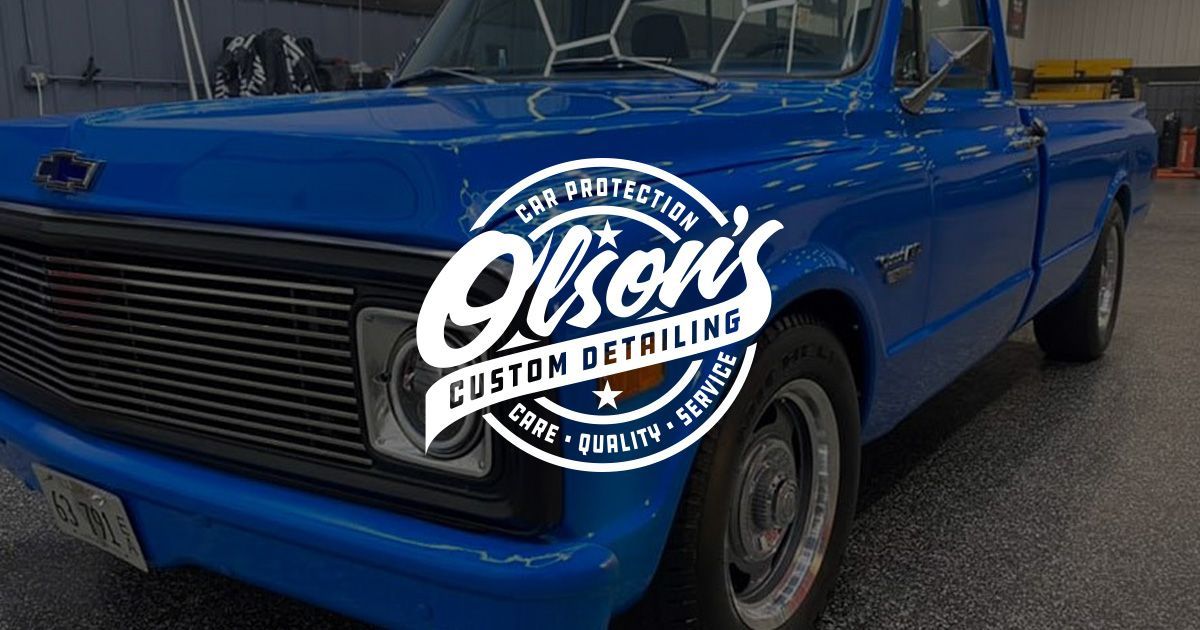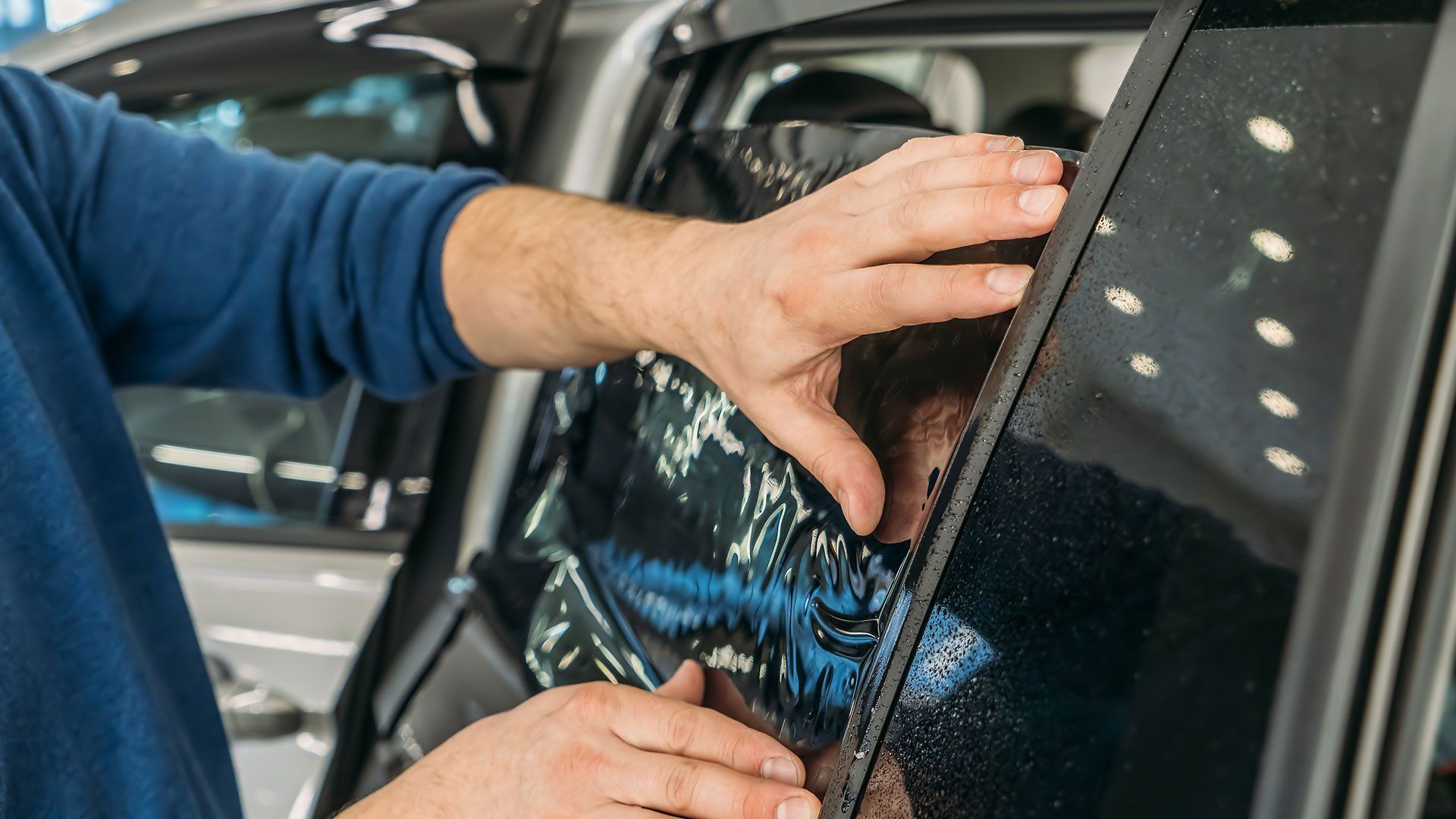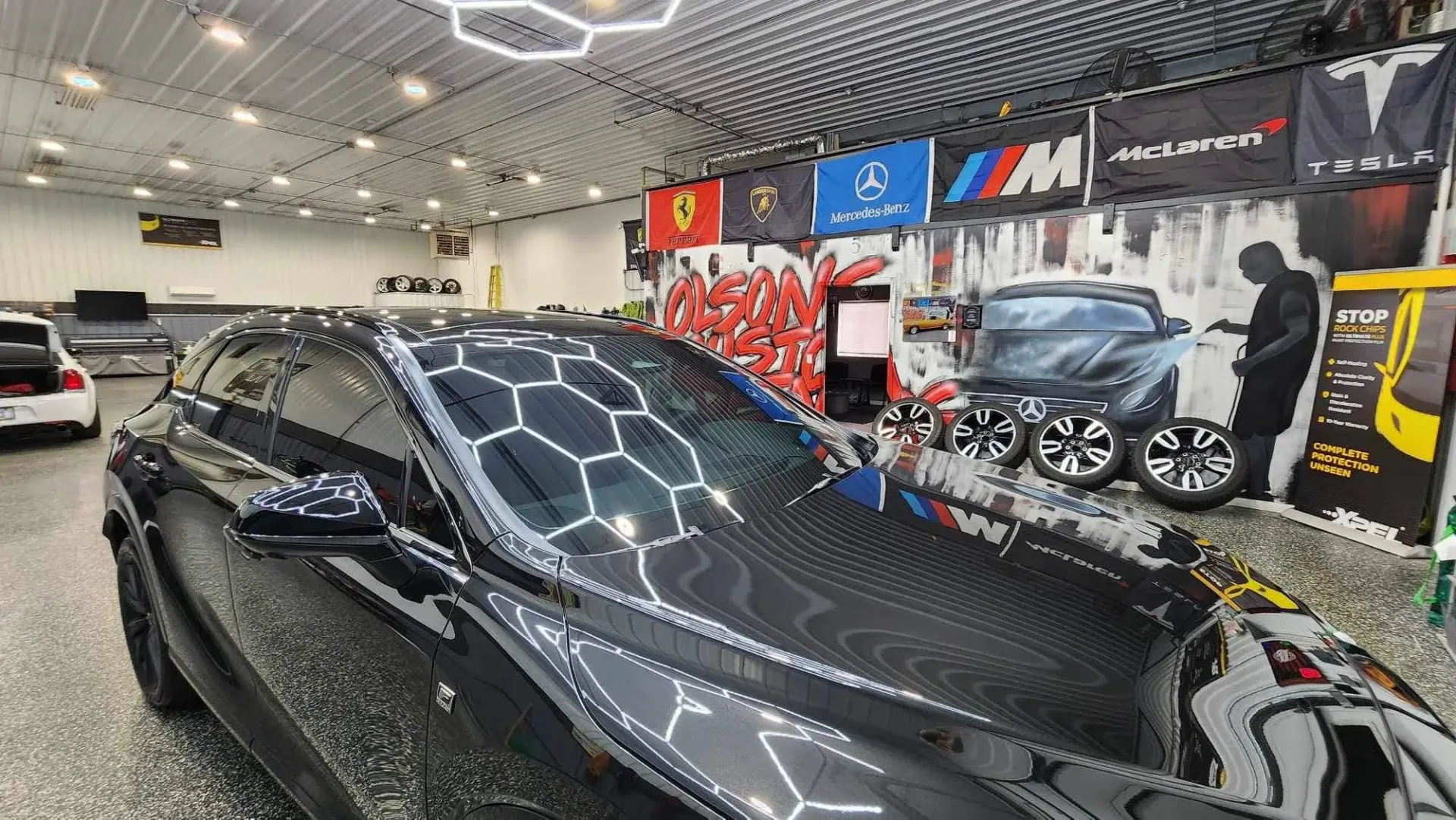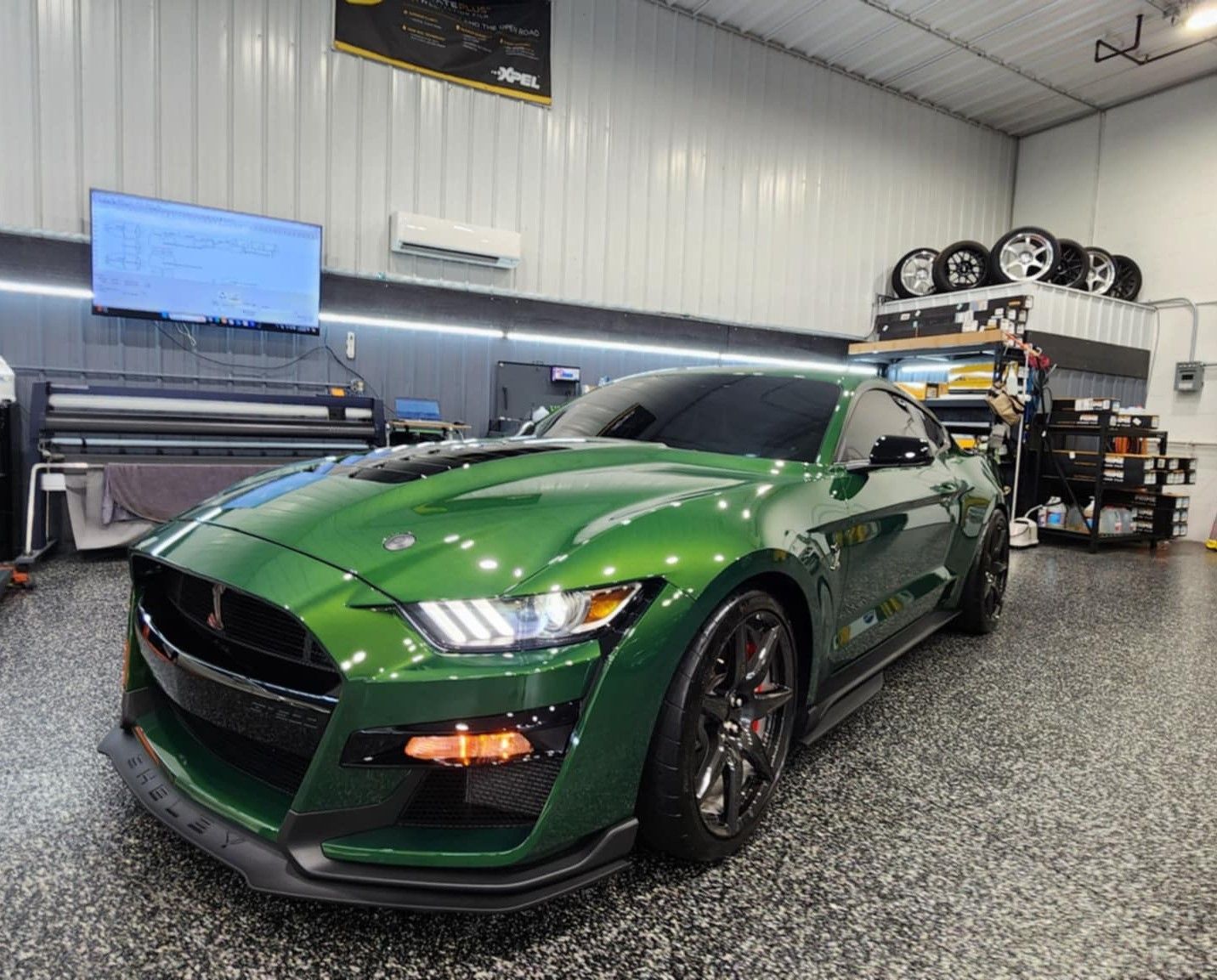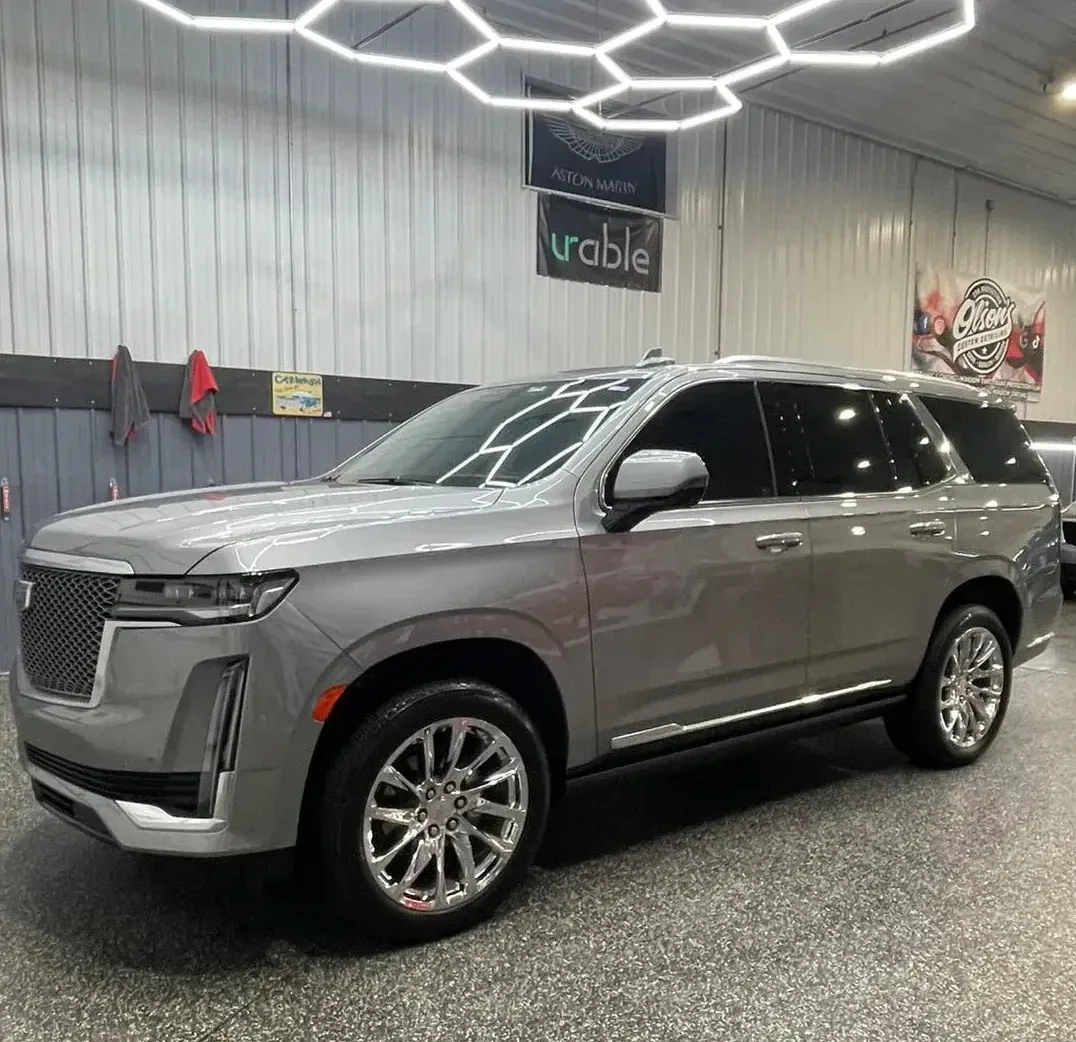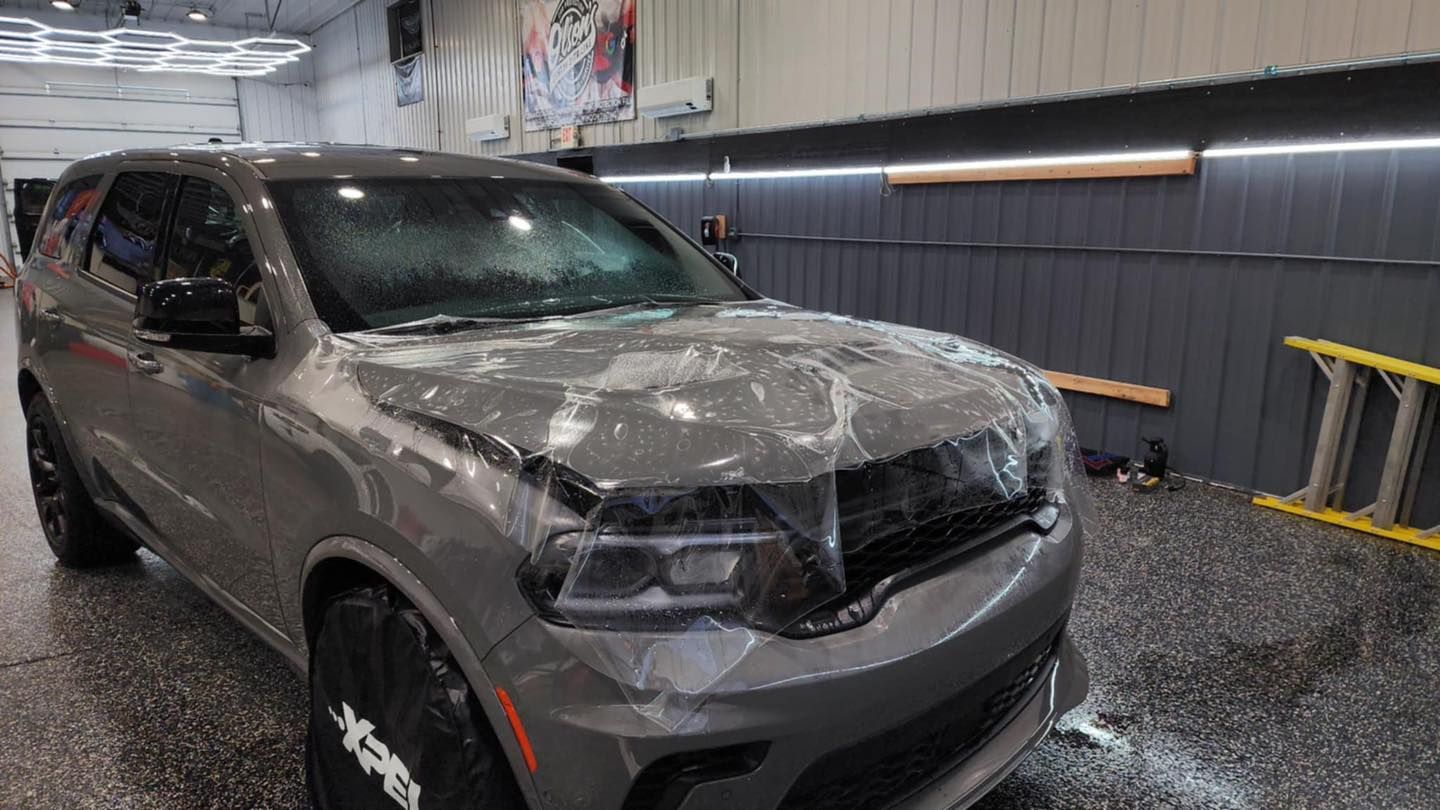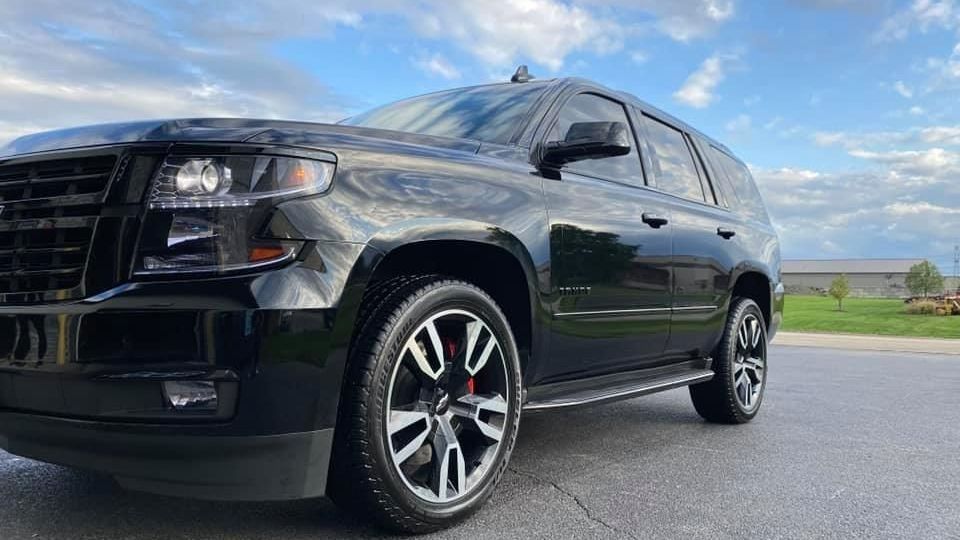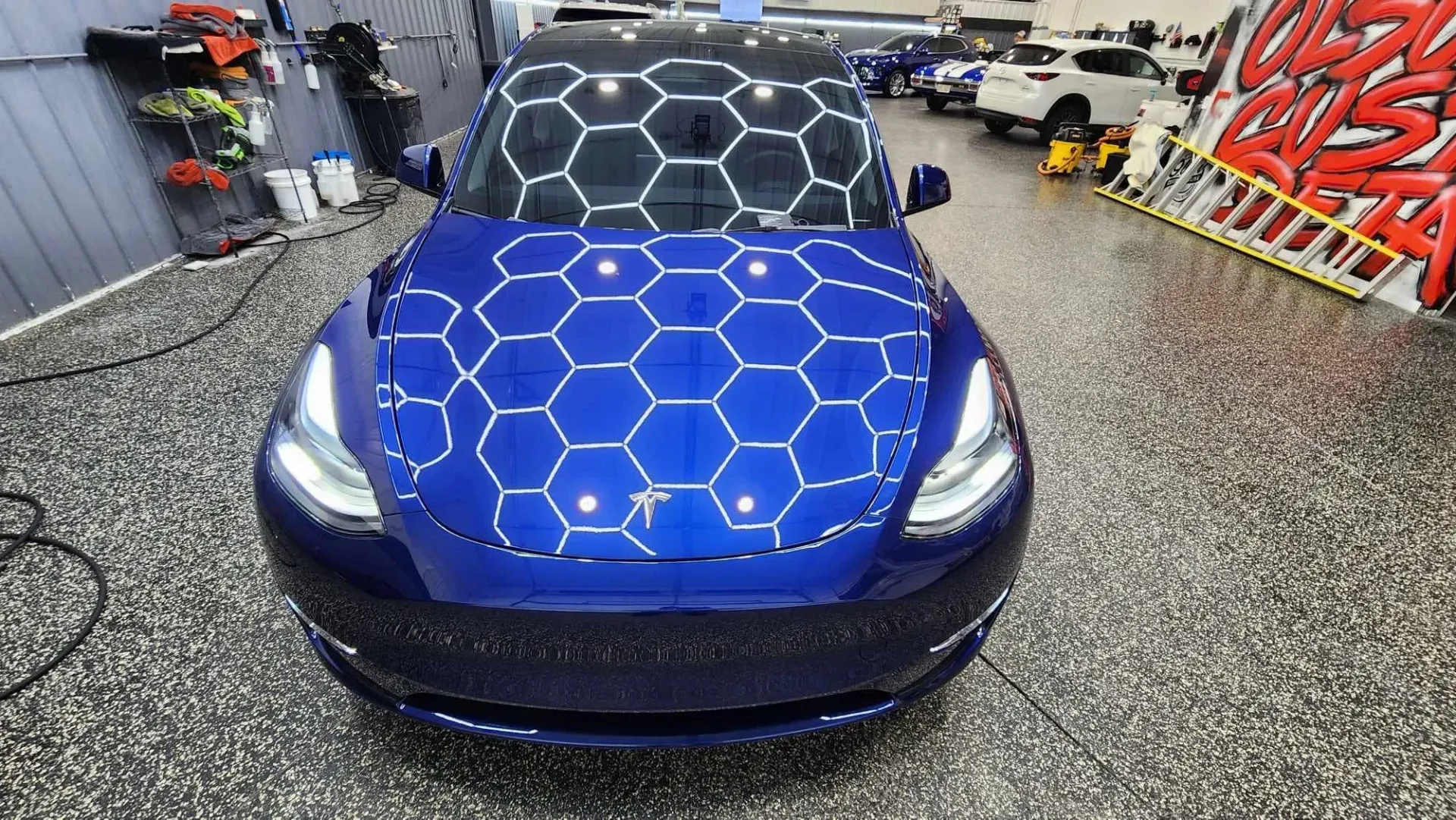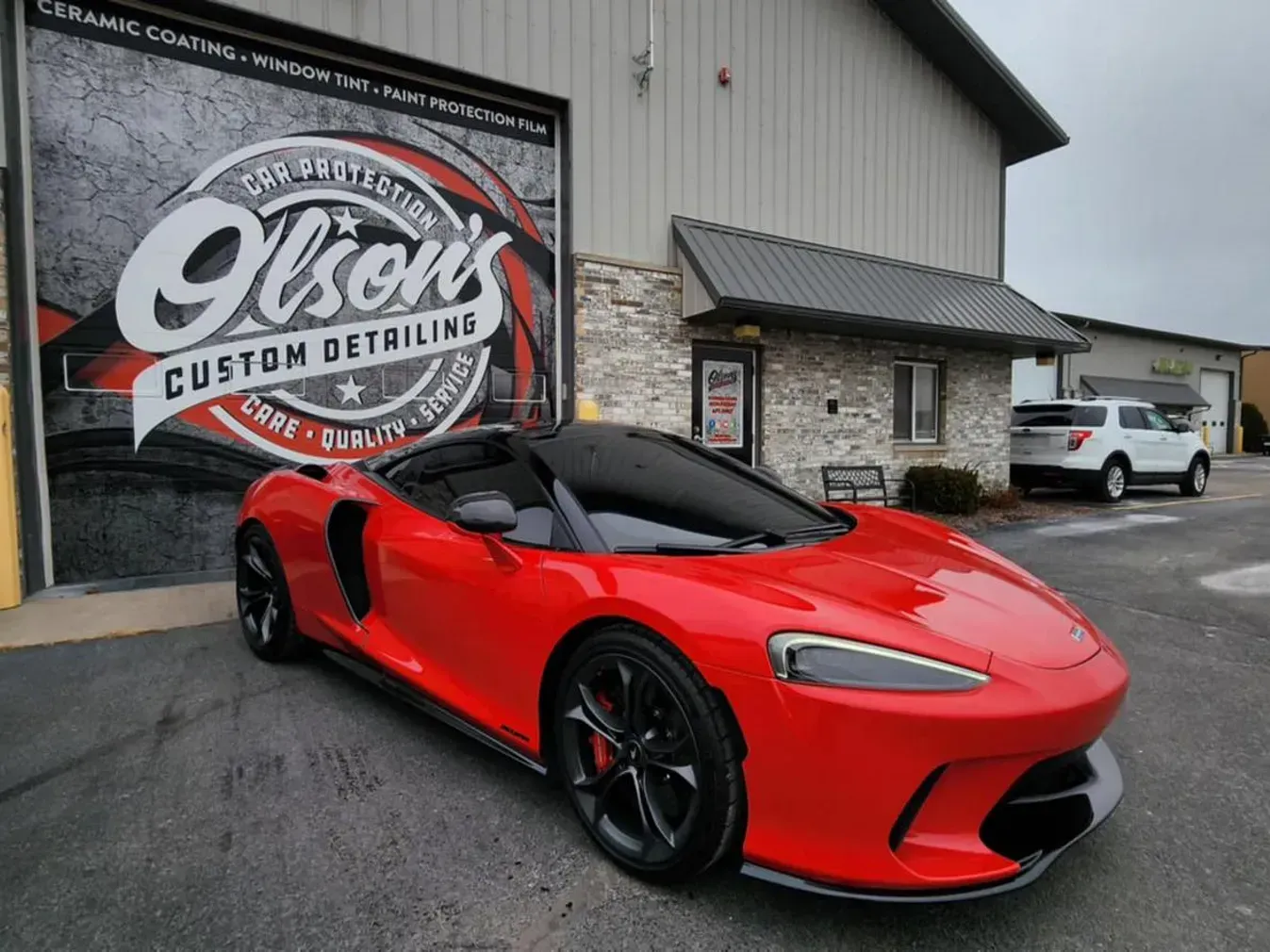Protecting your car's paint is essential it's like giving your vehicle a shield against the elements. If you want to keep your ride looking fresh and pristine while warding off scratches and environmental damage, paint protection film (PPF) might be exactly what you need. Many vehicle owners don't realize that different types of PPF are available, each offering varying levels of protection. Choosing the right one doesn't have to feel overwhelming. In this article, we'll break down the types of paint protection film, how they work, and why having the right knowledge can save you time, effort, and money in the long run. Let's dive into the world of PPF and discover how to best protect your investment from everyday hazards.
The different types of paint protection film include Self-Healing PPF, which can repair minor scratches due to its advanced material properties; Instant Healing PPF, which utilizes nanotechnology for quick fixes; and Entry-Level PPF, which offers basic protection but lacks modern UV safeguards. Each type serves a unique purpose, catering to different levels of protection and customization preferences based on vehicle owners' needs.
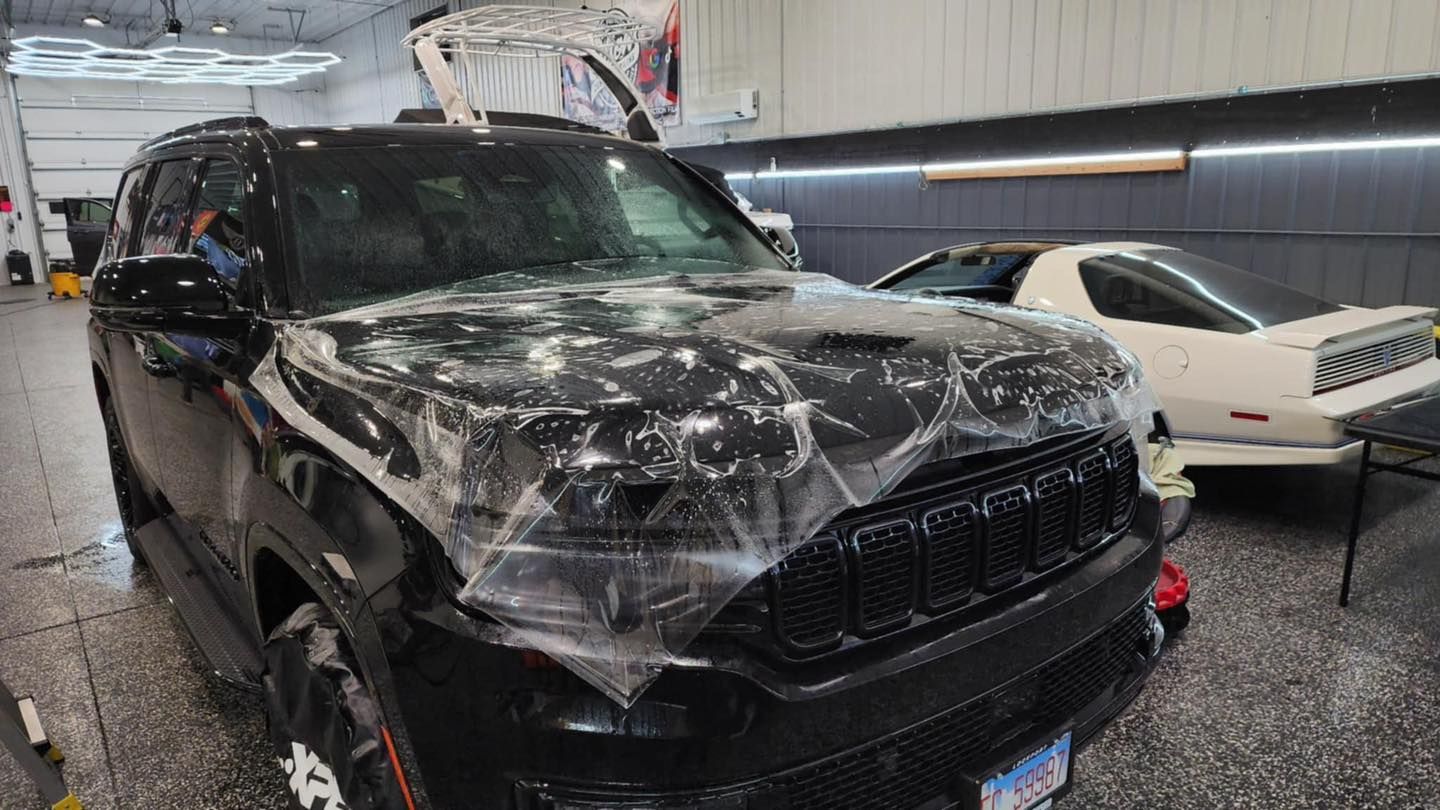
The Basics of Paint Protection Film
At the heart of paint protection film's effectiveness lies its carefully engineered materials. Typically, PPF is constructed using thermoplastic urethane (TPU) or polyvinylidene fluoride (PVDF). These materials play distinct roles in providing the durability and protection your vehicle needs.
TPU is favored for its remarkable elasticity, allowing it to stretch without breaking, making it ideal for vehicles that may encounter various impacts. On the other hand, PVDF excels in chemical resistance, helping it withstand harsh weather conditions and environmental pollutants that can damage your car's finish.
Understanding these components will help clarify how they work together to form an effective barrier against potential harm.
| Component | Function | Material Type |
|---|---|---|
| Top Coat | Provides scratch resistance and UV protection | TPU/PVDF |
| Acrylic Adhesive | Ensures strong bonding with vehicle paint | Acrylic-based |
| Polyurethane Film | Absorbs impact from debris and physical damage | Polyurethane |
| Release Liner | Protects adhesive during installation | Polyethylene Terephthalate (PET) |
Each layer serves a specific purpose. The top coat protects against minor damage and UV rays, which is essential to prevent fading of your vehicle's original color. The acrylic adhesive guarantees a firm bond between the film and your car's surface, ensuring that your protection remains intact even under stress. The polyurethane film absorbs impact from debris like rocks or road grit, acting as a cushion against potential blemishes on your paint job. Finally, the release liner is crucial during installation, protecting the adhesive from contamination before it adheres properly.
With an understanding of its components established, we can appreciate how this sophisticated blend works harmoniously to safeguard your vehicle. As a car owner, knowing your vehicle has this invisible armor provides peace of mind on long drives and during daily commutes. PPF maintains your car's aesthetic appeal by enhancing its shine and color while significantly reducing wear and tear caused by external factors. It's not just about aesthetics it's a proactive approach to vehicle maintenance that protects your investment and saves you potential repair costs in the long run.
Types of Paint Protection Films
As we explore the various formulations of PPF, we'll discover that these films cater specifically to unique vehicle demands and driver preferences. Each type holds distinct characteristics tailored for different levels of protection, longevity, and budget considerations.
Instant Healing PPF
Instant Healing PPF is a marvel of modern technology. Utilizing advanced nanotechnology, this film can quickly mend minor scratches with remarkable efficiency. When exposed to warmth—whether it's the heat from the sun or even warm water these films are designed to return to their original smooth surface.
Imagine you're parked outside on a sunny day; if a tiny scratch appears, it can practically vanish in mere minutes as the heat works its magic. This responsiveness makes Instant Healing PPF a top choice for those who want their vehicle looking pristine without constant worry.
Self-Healing PPF
In a similar vein, Self-Healing PPF provides exceptional coverage against everyday wear and tear. This type showcases an elastic top layer that absorbs the impacts from minor abrasions without visibly damaging the surface.
For example, if you consistently use your car's door handle while entering, the soft pressure and friction result in minimal wear over time. With this elasticity, Self-Healing PPF ensures that everyday interactions won't leave lasting marks on your paintwork.
Entry-Level PPF
On the other hand, Entry-Level PPFs serve as an affordable alternative for those who are budget-conscious but still desire some level of paint protection. While they provide basic shielding against dirt and minor chips, these films typically come without advanced features like UV inhibitors.
As a result, they may discolor or degrade faster than their high-end counterparts. For temporary protection or vehicles that don't face harsh conditions, Entry-Level PPF could be a viable option.
Understanding the specific benefits of these three types equips you with important knowledge for selecting ideal solutions for your vehicle's needs.
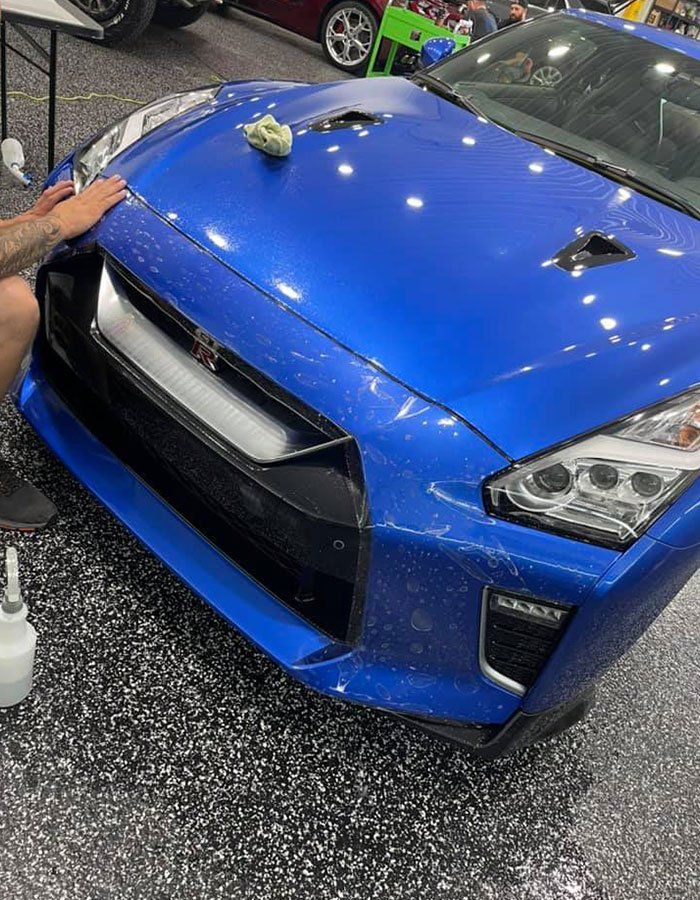
Application Methods
Proper application is at the heart of paint protection film's effectiveness. The method you choose can significantly impact the aesthetic appeal and longevity of your film. Professional installation is often considered the gold standard because it ensures that every inch of the film adheres perfectly to your vehicle's surface without bubbles or peeling edges. Experts have access to advanced tools and pre-cut kits tailored specifically for different car models, allowing them to achieve a flawless fit.
Engaging a professional isn't just about aesthetics; it's also about durability. Skilled technicians know how to manage tricky areas, like curves and edges, while applying adequate pressure during placement to avoid imperfections. They understand how to use heat correctly, which aids in bonding and ultimately enhances the longevity of the film.
On the flip side, DIY applications provide an exciting avenue for those who enjoy hands-on projects or are working with a tighter budget. With readily available DIY kits featuring all necessary materials, you can take matters into your own hands. However, this approach does come with challenges; meticulous attention to detail is paramount to avoid common pitfalls like trapped air bubbles or misalignment.
To make your DIY journey smoother, consider investing time in watching comprehensive tutorials that guide you through each step of the application process. Practicing on less-visible areas before tackling prime spots can greatly improve your skills and confidence.
Both methods offer distinct advantages tailored to varying preferences and needs.
Key Advantages of PPF
Paint protection films offer a wealth of benefits that make them an essential investment for any car owner looking to maintain both the value and appearance of their vehicle.
The first striking benefit of PPF is UV rays protection. This layer offers impressive UV resistance. Prolonged sun exposure can lead to fading paint and oxidized finishes, which nobody wants after investing in a vehicle. PPF helps filter harmful UV rays, keeping your vehicle's color vibrant and preventing costly repainting in the long run.
Moreover, PPF provides exceptional chemical resistance. Everyday occurrences like bird droppings, tree sap, or spilled gasoline can wreak havoc on your paint if left unattended. Luckily, PPF stands as a shield against these acidic contaminants, allowing you to clean your vehicle with peace of mind knowing that its surface stays protected.
A particularly remarkable feature is the self-healing capability offered by many modern paint protection films. This innovative technology means that when minor scratches occur—whether accidentally caused by car keys or day-to-day wear and tear, the film has the ability to repair itself over time. Under the right conditions, like exposure to warm temperatures above 70°F (21°C), those superficial marks can disappear, restoring your car's flawless appearance without any additional effort on your part.
Selecting the Ideal PPF
Choosing the right PPF means examining not just the aesthetic benefits, but also how well it caters to your vehicle's usage. Your driving habits play a significant role in this decision. For instance, if you frequently find yourself on highways where loose stones and debris can chip away at your vehicle's finish, opting for a thicker film offers better impact resistance. A premium option designed for heavy-duty conditions will absorb such impacts effectively, safeguarding your car's paintwork.
However, if you mostly navigate through urban environments with less risk of road debris, a standard film may suffice. These often come with self-healing properties that protect against minor damage while also offering UV protection to guard against sun damage.
In addition to considering usage, your budget is another essential aspect of choosing the right PPF. The decision between budget and longevity is something every car owner faces when selecting PPF. While higher-end films might require a larger upfront investment, averaging $2,000 to $8,000, the investment often pays off in the long run. These films typically feature superior self-healing technology that eliminates minor scratches and come with extended warranties, reflecting their quality and durability. Consider this: would you rather invest more now to prevent costly paint repairs later?
Conversely, for those keeping a closer eye on their finances, basic films can still offer reliable protection without breaking the bank while focusing on essential features. However, there's merit in investing in premium PPF. Basic films might protect against everyday wear and tear but lack the longevity and advanced features of high-end options. Investing in higher quality can ultimately reduce long-term maintenance costs by providing better protection and requiring fewer repairs or replacements down the line.
Just like investing in quality footwear means better comfort and durability, quality PPF ensures your vehicle stays looking pristine longer. Selecting the ideal PPF isn't merely about applying a layer of film; it requires careful thought about usage patterns, budget constraints, and an understanding of the potential long-term savings involved.
Maintenance Tips for PPF
Regular cleaning is essential for maintaining the protective film's integrity and keeping your vehicle looking its best. A gentle hand wash with a pH-neutral car soap is the preferred method; this means steering clear of harsh chemicals that could deteriorate the film over time. Just as you wouldn't use harsh detergent on your favorite clothing, you want to ensure your PPF remains in top condition without unwarranted stress from aggressive cleaning agents.
It's also crucial to avoid high-pressure washes. While they might seem efficient, those powerful jets can cause the edges of the film to lift or become damaged, leading to costly repairs down the line. Think of high-pressure washing like a strong windstorm, your PPF is vulnerable to those intense blasts of water.
Avoiding Abrasive Tools
When drying off the surface, always opt for microfiber cloths. These soft towels are specifically designed to absorb moisture without scratching delicate surfaces. On the other hand, abrasive sponges may seem innocuous but can easily mar the finish of your film.
After you've cleaned and dried your car, it's wise to apply care products specifically formulated for PPF. Quick detailers designed for these films not only enhance shine but also act as additional shields against contaminants. Applying a hydrophobic sealant creates a barrier that repels rainwater, dirt, and insects while making future cleans easier, a win-win situation.
Regular Inspections
Make a habit of inspecting your PPF regularly for signs of wear or damage such as yellowing or lifting edges. Just like routine health check-ups are critical for our well-being, regular inspections of your film help catch any issues early before they escalate. If discoloration or physical damage is observed, like scratches that don't self-heal, it may be time for replacement.
To maximize the durability of your PPF, aim to wash it every 1-2 weeks. This frequency can vary based on driving conditions, but if you frequently encounter bugs or harsh weather, more regular attention will yield better results. Additionally, park in shaded areas when possible, as prolonged exposure to sunlight can shorten the film's lifespan by causing fading or degrading the adhesive properties.
By following these detailed tips and understanding how best to care for your PPF, you'll ensure that your car not only looks stellar but also stays protected from everyday hazards and retains its value over time.
Final Thoughts
Choosing the right type of paint protection film is an investment in your vehicle's future. Whether you opt for the advanced technology of Instant Healing PPF, the reliable performance of Self-Healing PPF, or the budget-friendly Entry-Level option, you're taking a proactive step toward preserving your car's appearance and value. At Olson's Custom Detailing, we understand that your vehicle represents a significant investment, and we're committed to helping you protect it with expert service and high-quality products.
Ready to give your vehicle the protection it deserves?
Contact Olson's Custom Detailing at (708) 789-0034 to schedule your free consultation. Our experienced team will help you select the perfect PPF solution tailored to your driving habits, budget, and protection needs. Don't wait until damage occurs, protect your investment today and enjoy the peace of mind that comes with knowing your vehicle is shielded by the best in the business.
